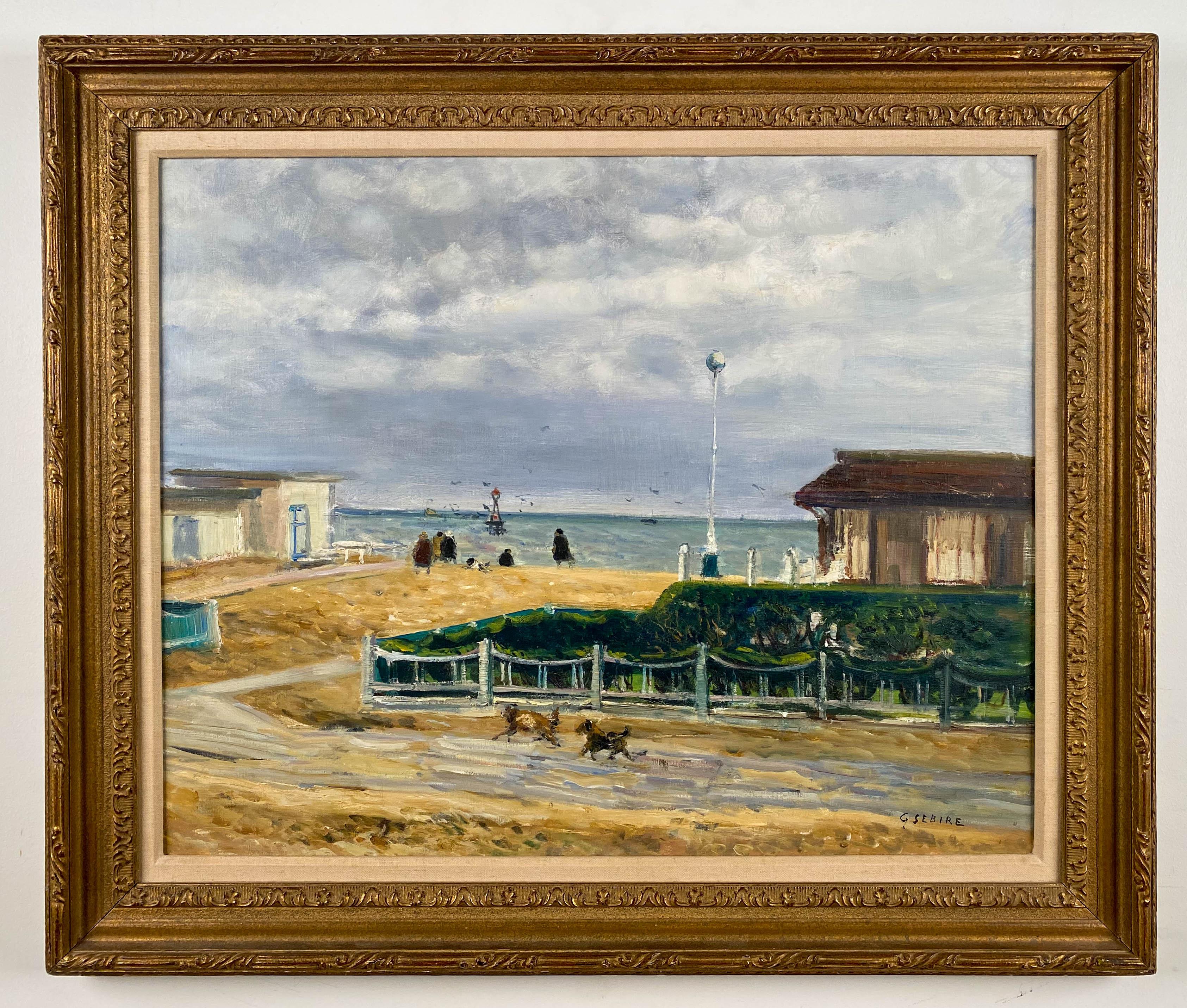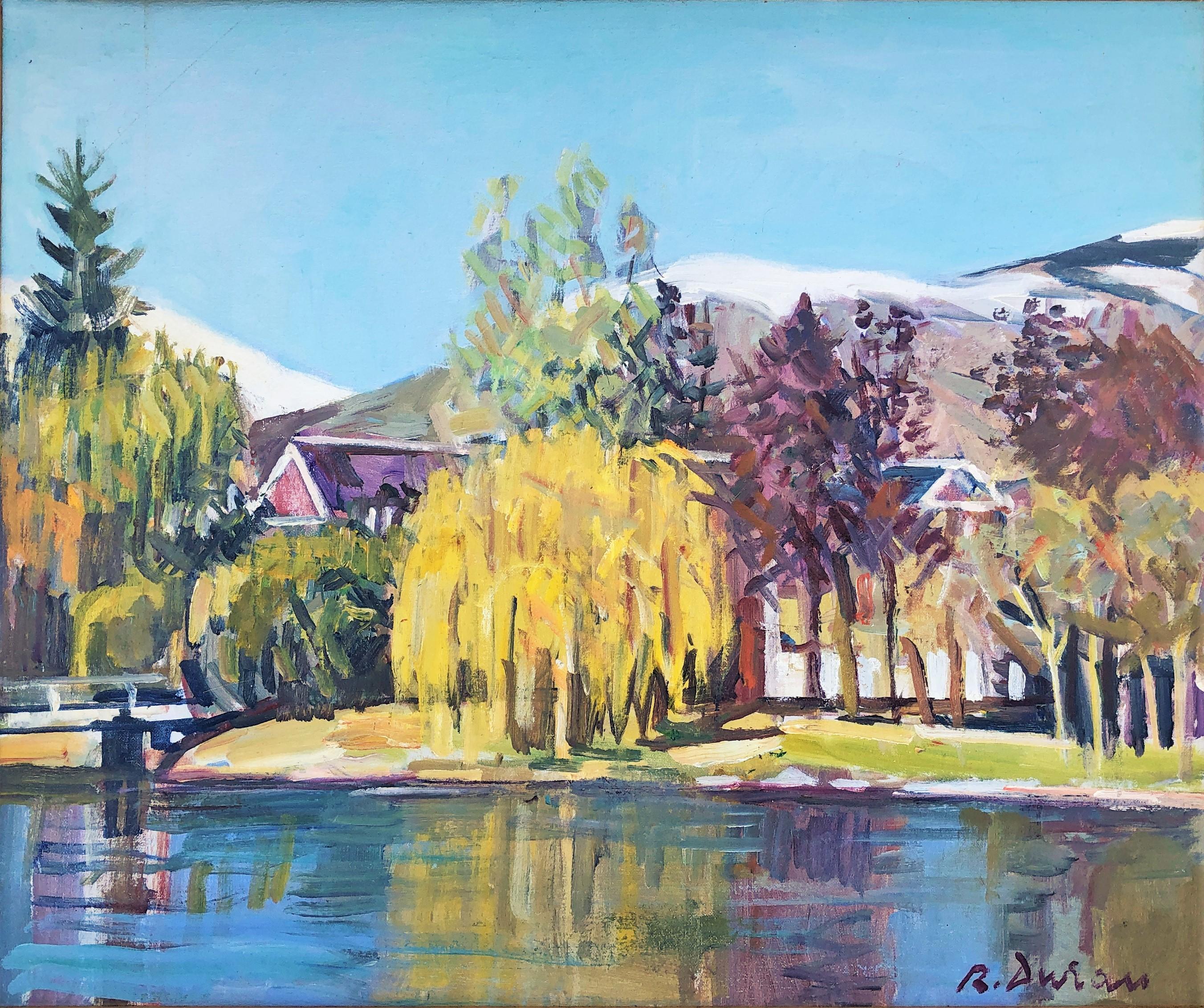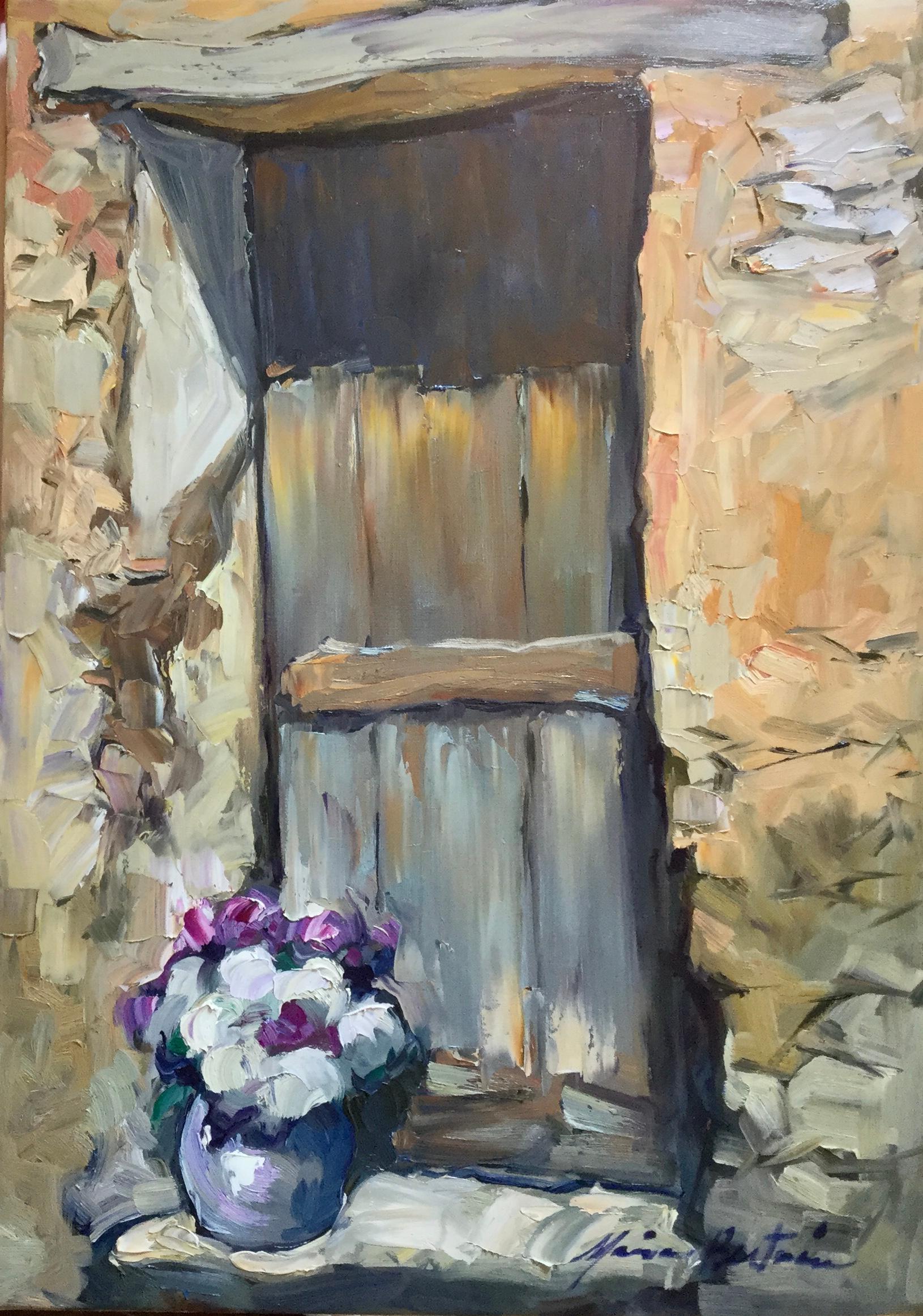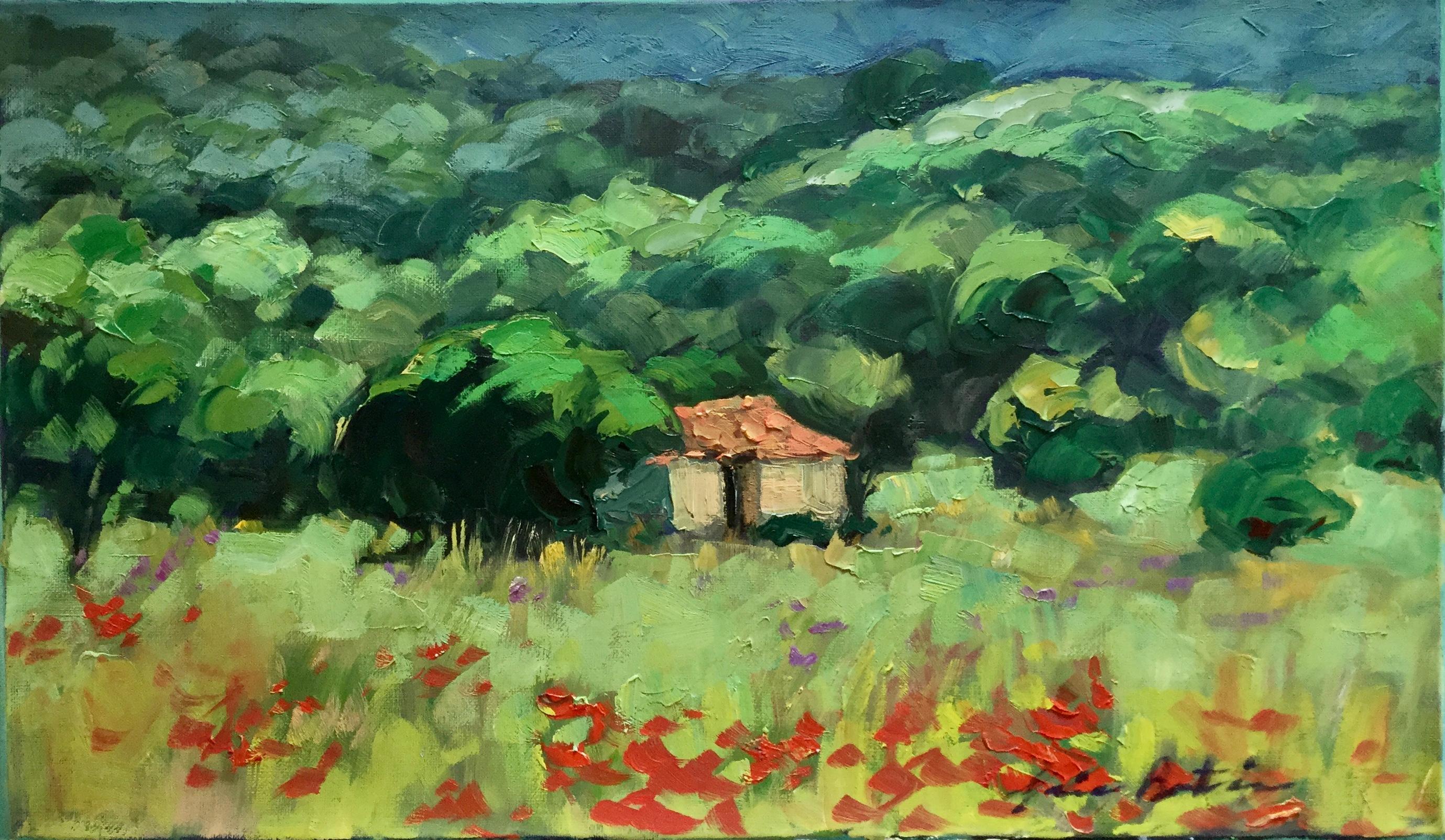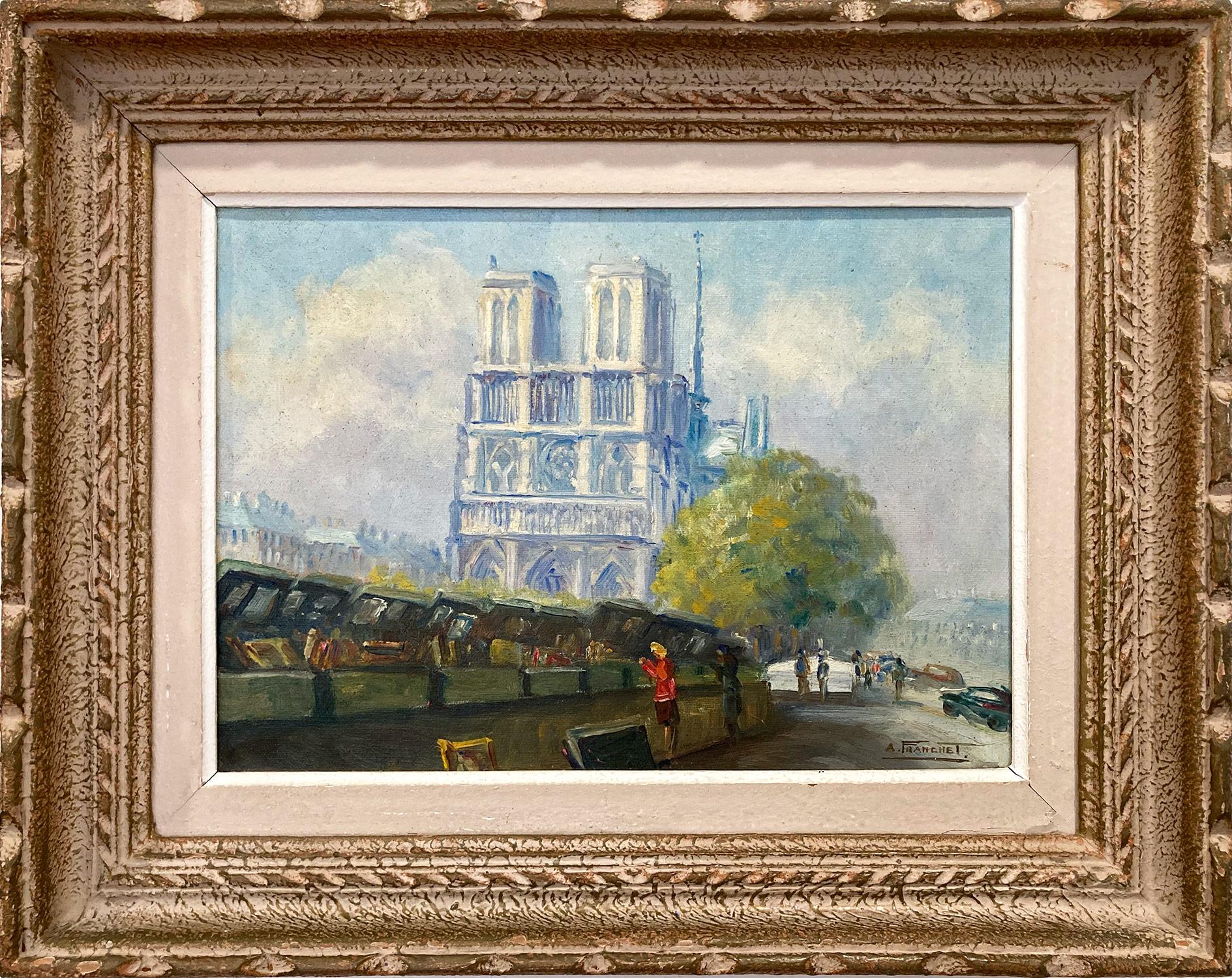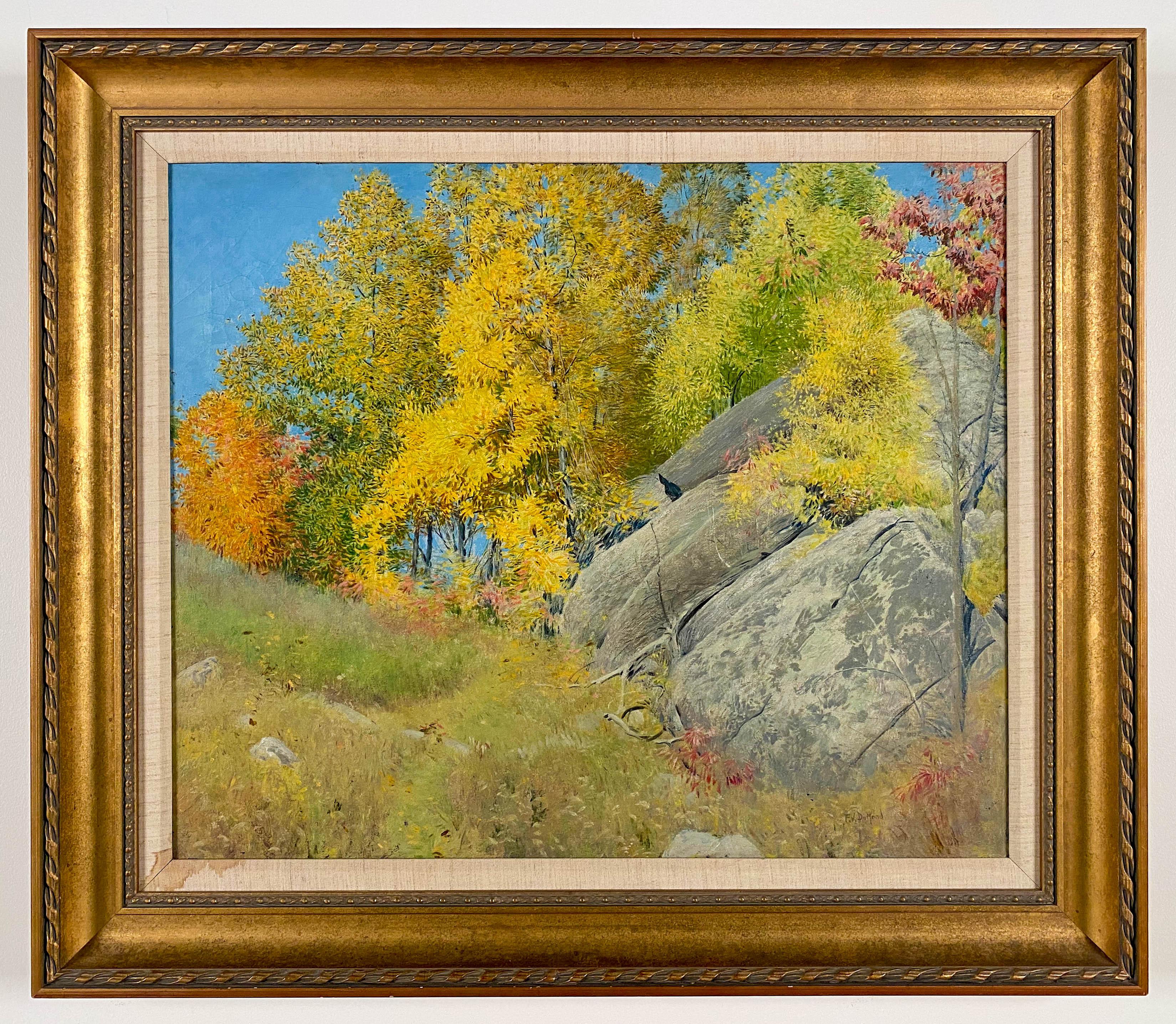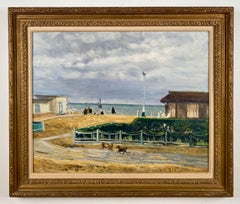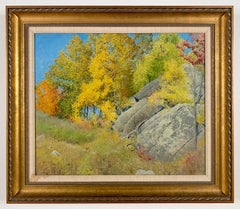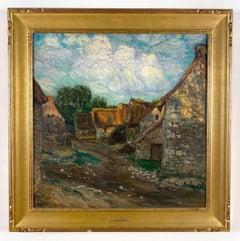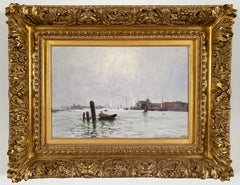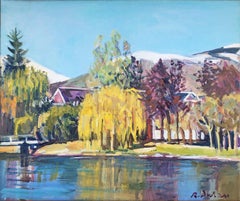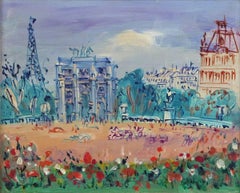
Le Jardin des Tuileries et l‘Arc de Triomphe du Carrousel
View Similar Items
Want more images or videos?
Request additional images or videos from the seller
1 of 6
Jean DufyLe Jardin des Tuileries et l‘Arc de Triomphe du Carrousel
About the Item
- Creator:Jean Dufy (1888 - 1964, French)
- Dimensions:Height: 13.25 in (33.66 cm)Width: 16.5 in (41.91 cm)Depth: 1 in (2.54 cm)
- Medium:
- Movement & Style:
- Period:
- Condition:
- Gallery Location:Sheffield, MA
- Reference Number:Seller: Art D2571stDibs: LU70032063523
Jean Dufy
Jean Dufy was a French Art Deco artist, best known for his colourful, melodic depictions of post-war Parisian society. Working to capture everyday life, from concert halls and circuses to country landscapes and busy Parisian streets, Dufy focused on recreating the feeling and impression of a scene, rather than individual details. In 1906, Dufy visited the exhibition ‘Cercle de l’Art Moderne’ in La Havre, and it was this show that eventually inspired him to pursue an artistic career. The exhibit, one of Dufy’s first exposures to Modern Art, crucially shaped his approach to art and introduced him to artists such as Picasso and Matisse. While he had no formal training, his older brother was well-known French Fauvist Raoul Dufy, who served as his artistic mentor. In January 1914, Dufy launched his artistic career, holding his first show at Galerie Berthe Weil. He returned to Paris after the war and settled in the Montmartre district of Paris, moving next door to artist George Braque, who encouraged Dufy to experiment with Cubism. His personal painting style developed into a vibrant fusion of Post-Impressionism with a loose decorative approach to colour and line, which he achieved from his work in porcelain design. For almost 30 years, Dufy worked for Limoge porcelain manufacturer Theodore Haviland, hand-painting decorative designs of animals and flowers. At the 1925 L’exposition Internationale des Arts Décoratifs he was awarded a gold medal for designing the service ‘Châteaux de France’. Dufy participated in many exhibitions, including the Salon d’Automne, which reflected the popularity of jazz music and the art of Parisian culture after the war. Dufy would return to his native Normandy throughout his life and spent long stretches of time in the south of France. The dynamism of these landscapes and cityscapes - particularly noticeable in the street scene Route de Rives (Touraine)- are so cleverly captured due to Dufy’s uniquely musical and distinctive Post-Impressionistic style.
About the Seller
4.0
Vetted Professional Seller
Every seller passes strict standards for authenticity and reliability
1stDibs seller since 2017
53 sales on 1stDibs
Typical response time: 13 hours
Authenticity Guarantee
In the unlikely event there’s an issue with an item’s authenticity, contact us within 1 year for a full refund. DetailsMoney-Back Guarantee
If your item is not as described, is damaged in transit, or does not arrive, contact us within 7 days for a full refund. Details24-Hour Cancellation
You have a 24-hour grace period in which to reconsider your purchase, with no questions asked.Vetted Professional Sellers
Our world-class sellers must adhere to strict standards for service and quality, maintaining the integrity of our listings.Price-Match Guarantee
If you find that a seller listed the same item for a lower price elsewhere, we’ll match it.Trusted Global Delivery
Our best-in-class carrier network provides specialized shipping options worldwide, including custom delivery.More From This Seller
View AllAt The Seaside
By Gaston Sebire
Located in Sheffield, MA
Gaston Sebire
French, 1920-2002
At The Seaside
Oil on canvas
25 by 31 in. W/frame 33 ½ by 39 ½ in.
Signed lower right
Gaston Sebire (1920 – 2002) Gaston Sebire, was one of Europe’s leading landscapists, was born in the village of Saint-Samson in Normandy in 1920. A self taught artist, he began to paint seriously at the age of eighteen. For eight years he worked as a postal clerk in the Rouen, sorting letters at night in order to support his career as a painter. In 1952 Gaston Sebire had his first exhibition at the Galerie Gosselin in Paris.
The following years he enjoyed the double triumph of winning both the coveted Prix de la Critique and the Prix Casa Velasquez. The Latter award made it possible for him to spend a year and a half in Spain. Of this formative period he said, “They were my first, wonderful years without worry. For fifteen years I had never known what the next day would bring.”
The year 1957 marked another important stage in his career. His painting “La Dinde” won the Greenshields Prize in a field of 136 competitors, making it possible for him to paint for another two years without the worry of finances. Winning the awards naturally drew public attention to the artist from Normandy, and his works were presented in highly successful one-man shows in Paris.
Sebire was a Norman, a man strongly attached to the soil, and after his exhibitions in Paris, he returned to Rouen to his large house overlooking the town and once again plunged into painting the countryside. Gaston Sebire was a strongly built man with square hands and a rather heavy walk. He had immense vitality, and used that to his advantage. As he said of himself, “When the snow falls, I can’t stay indoors. I set out with my paint box. I paint outdoors from nine in the morning until five at night. If it were only a question of money, one could just as well paint in one’s own room.” But Sebire went into the countryside, or into the village, and sets up his easel. When there is a café into which people are going; there is a fence, a telegraph pole, a few buildings in the background. The scene takes on life, vivid life, with a sense of some event about to take place in the scene. Like many artists, and like a typical Norman, Sebire was silent and solitary by nature, with a personality as strong and frank as his paintings. A painting, he says, “must have an element of mystery, show an effort to look beyond the aura surface of things.”
Sebire’s early paintings were somber with much use of black and white tones. In 1970 he turned to colour. The subtle light of the Normandy skies; the shifting light and color along the seacoast; the magnificent blues of the Rouen pottery...
Category
1960s Post-Impressionist Landscape Paintings
Materials
Oil
Sunny Hedge
By Frank Vincent Dumond
Located in Sheffield, MA
Frank Vincent Dumond
American, 1865-1931
Sunny Hedge
Oil on canvas
Signed "F.V. DuMond," lower right
24.5 in. by 29 in. W/frame 32.5 by 37 in.
Born in Rochester, New York in 1865, Frank DuMond left his work as an illustrator at age 23 to study in the rigorous classical atelier tradition of the Academie Julian Paris in 1888. Upon his return to New York in 1892, DuMond embarked on a painting and teaching term at the Art Students League spanning nearly six decades until his death.
A painter of diverse talents, he was an accomplished landscape, portrait and still life painter, muralist, and leader of the Tonalist then Impressionist art colonies of Lyme, Connecticut. In particular, DuMond was noted for his use of landscape green. American Impressionist expert William H. Gerdts wrote of DuMond, "As one might speak of Velazquez's blacks, one must speak of DuMond's greens." Scholars have described him as a deft painter of the American Impressionist landscape and the figure, but he will perhaps be remembered as among the most outstanding educators in American art history. Though an accomplished painter, he is said to have considered himself more of an educator than an artist.
By all accounts, DuMond is described by his students as a man whose art and teaching methods were based on deeply held religious and philosophical beliefs. One student recalls, "There were occasions when DuMond revealed a clear intent to educate us on a deeper level than might casually be associated with painting." His students remember him fondly as "a genial, generous, and perceptive instructor…whose warmth and kindness pervaded everything he did." Under his tutelage, many prominent American artists were brought to recognition, including Georgia O'Keeffe, Norman Rockwell, and John Marin. Still other protégés of DuMond renown became influential teachers, such as Baroque-style painter Frank Mason, whose influence emerged in New York at the Art Students League; and Arthur Maynard...
Category
1920s Post-Impressionist Landscape Paintings
Materials
Oil
Brittany
Located in Sheffield, MA
Edward Francis Rook
American, 1870-1960
Brittany
Oil on Canvas
30 by 30 in. W/frame 38 by 38 in.
Signed lower left
Circa, 1898-1900
Rook, born in New York City on September 21, 1870, became one of the most original impressionists at Old Lyme. First he was a student of Benjamin Constant and Jean-Paul Laurens at the Académie Julian. Life started out to be rather promising for Rook, around the turn of the century. He exhibited at the Cincinnati Art Museum and at the Pennsylvania Academy of the Fine Arts, both in 1898, when his harbor scene, entitled Pearl Clouds — Moonlight was reproduced in International Studio, in April. In addition, the PAFA presented him with the Temple Gold Medal for Deserted Street, Moonlight, which the Academy purchased. Three years later, Rook was awarded a bronze medal at the Pan-American Exposition in Buffalo, where he exhibited three landscapes. Caffin (1902, p. xxxvi) praised the artist's "translucent quality of color," which suggests a study of color theory. Also in 1901, Rook married Edith Sone. For most of 1902, the Rooks were in Mexico.
Rook came to Old Lyme in October of 1903. The date is significant because Childe Hassam was also there that month. Hassam would more or less re-orient the artists' colony from Tonalism to impressionism. Rook would move there permanently two years later.
He took two medals at the St. Louis Universal Exposition (1904) where his landscapes from the Mexican trip were displayed. More awards followed: a silver medal at the International Fine Arts Exposition in Buenos Aires, 1910, a gold medal at San Francisco's Panama-Pacific International Exposition in 1915, a Corcoran Bronze Medal, and a William A. Clark Award in 1919 for Peonies. By 1924, the artist was made a National Academician. Despite all these awards and recognition, Rook did little in the way of selling his art and reportedly, his prices were too high. His paintings were handled by Macbeth and Grand Central Art Galleries.
Rook was active in Old Lyme's art community. As stated above, he would have met Hassam that October in 1903 but Willard Metcalf had departed at the end of the summer. As several writers have explained (Connecticut and American Impressionism, 1980, p. 123), Hassam "was the catalyst around whom [impressionism] coalesced." Rook's niece, Virginia Rook Garver, who happened to be the grand-niece of Hassam, confirmed that Rook and Hassam knew each other in Europe — before they went to Old Lyme (Fischer, 1987, p. 19).
Rook was one of the relatively young painters to come to Old Lyme, along with Gifford Beal, William Chadwick, and Robert Nisbet, on the wave of impressionism, initiated there by Hassam and Metcalf. Old Lyme became a center of American impressionism, and as Donelson F. Hoopes remarked, "under Hassam, the shoreline of Connecticut became a kind of Giverny of America." Among Ranger's group, palettes started to become lighter, except those of the most determined tonalists. Ranger himself, perhaps admitting defeat, moved to Noank in 1904.
Rook is best known for his views of Bradbury's Mill, which was soon called Rook's Mill, owing to the painter's many versions of the scene. One, called Swirling Waters, dated ca. 1917, is in the Lyme Historical Society. Even more famous is Rook's Laurel, dated between 1905 and 1910 (Florence Griswold Museum), in which a profuse laurel bush (the state flower), is set off by a spectacular Constable-like background. But Swirling Waters could never be confused with Constable, with its violent brushwork, impasto-layered water, and bright, almost chalky, plein-air palette. Gerdts (1984, p. 226) compares the paintings of Walter...
Category
1890s Post-Impressionist Landscape Paintings
Materials
Oil
Septembre, La Meuse a Dordrecht
By Marie Joseph Léon Clavel
Located in Sheffield, MA
“I Will”, Marie-Joseph-Leon-Clavel
French, 1850-1923
Septembre, La Meuse a Dordrecht
Oil on canvas, Signed
13 ¼ by 19 ½ in. W/frame 23 ¼ by 29 ½ in.
Marie-Joseph-Leon-Clavel took ...
Category
1890s Post-Impressionist Landscape Paintings
Materials
Oil
Notre Dame, Autonne
By Merio Ameglio, 1897-1970
Located in Sheffield, MA
Merio Ameglio
Italian, 1897-1970
Notre Dame, Autonne
Oil on Canvas
18 by 21 ½ in. W/frame 26 by 29 ½ in.
Signed lower left & titled on reverse
Merio noted impressionist painter p...
Category
1940s Post-Impressionist Landscape Paintings
Materials
Oil
Woman in Kimono
By Everett Lloyd Bryant
Located in Sheffield, MA
Everett Lloyd Bryant
American, 1864-1945
Woman in Kimono
Oil on canvas
Signed lower right
30 by 25 in. W/frame 35 by 30 in.
Everett studied wit...
Category
1920s Post-Impressionist Figurative Paintings
Materials
Oil
You May Also Like
New York city oil on canvas painting nyc urbanscape
Located in Barcelona, Barcelona
Guillem Villà Bassols (1917-2005) - NYC - Oil canvas
Oil measures 50x65 cm.
Frameless.
Living in Masnou, Barcelona, since he was seven years old, Guillem Villà Bassols developed h...
Category
1980s Post-Impressionist Landscape Paintings
Materials
Canvas, Oil
Barcelona Spain oil on canvas painting spanish seascape
Located in Barcelona, Barcelona
Pascual Fresquet Almurin (1930) - La Barceloneta Barcelona Spain - Oil on canvas
Oil measures 38x46 cm.
Frame size 48x56 cm.
Painter born in Hospital...
Category
1980s Post-Impressionist Landscape Paintings
Materials
Canvas, Oil
Pyrenean landscape with lake Spain original oil painting
By Rafael Duran Benet
Located in Barcelona, Barcelona
Frame size 73x81 cm.
Oil on canvas laid on cardboard.
Rafael Duran Benet (Terrassa, 1931 - Barcelona, 2015) is a Catalan painter, nephew of the also painter Rafael Benet. He is a di...
Category
1990s Post-Impressionist Landscape Paintings
Materials
Canvas, Oil, Cardboard
Landscape with castle oil on canvas painting
By Rafael Griera Calderón
Located in Barcelona, Barcelona
Frame size 78x87 cm.
Rafael Griera Calderón was born incidentally in Las Palmas de Gran Canaria in 1934. After residing in Olot from 1942 to 19...
Category
1990s Post-Impressionist Landscape Paintings
Materials
Canvas, Oil
"Door In Les Grand Clements" Contemporary Impressionist Oil of Provence
By Maria Bertrán
Located in Laguna Beach, CA
"Door In Les Grand Clements" is an exceptional large oil painted on location in Provence by Maria Bertran. This Contemporary Impressionist painting captures a timeless scene in the S...
Category
2010s Post-Impressionist Landscape Paintings
Materials
Oil
"Mon Cabanon" Contemporary Impressionist Oil of Provence
By Maria Bertrán
Located in Laguna Beach, CA
Mon Cabanon" is an exceptional oil painted on location in Provence by Maria Bertran. This Contemporary Impressionist painting captures a timeless scene in the South of France. Creat...
Category
2010s Post-Impressionist Landscape Paintings
Materials
Oil
Recently Viewed
View AllMore Ways To Browse
Antique French Tuileries
Triomphe Canvas
Raoul Dufy Ink
333 Gold
Blues Vintage Guitars
Pablo Picasso Guitar
Used Jazz Guitars
Chateau De Tuileries Porcelain
Animal Paintings Draft Horses
French Porcelain Soldiers
Vintage Guitars Electric Guitars
Used Electric Pianos
Jean Haviland
Chateau De Trianon
Porcelain Horse And Carriage
Jardin Post Impressionist Floral
Raoul Dufy Orchestra
Antique Country French Secretary
